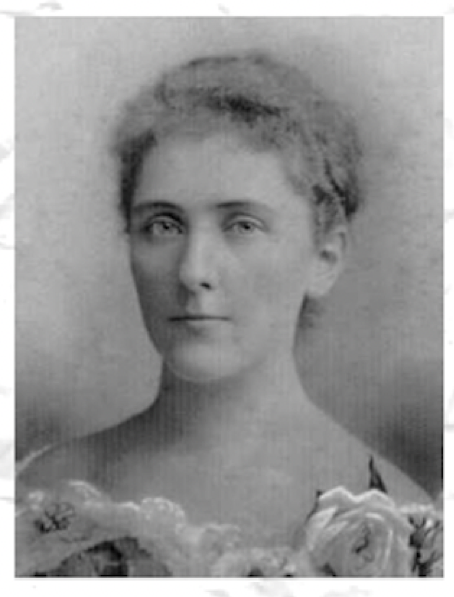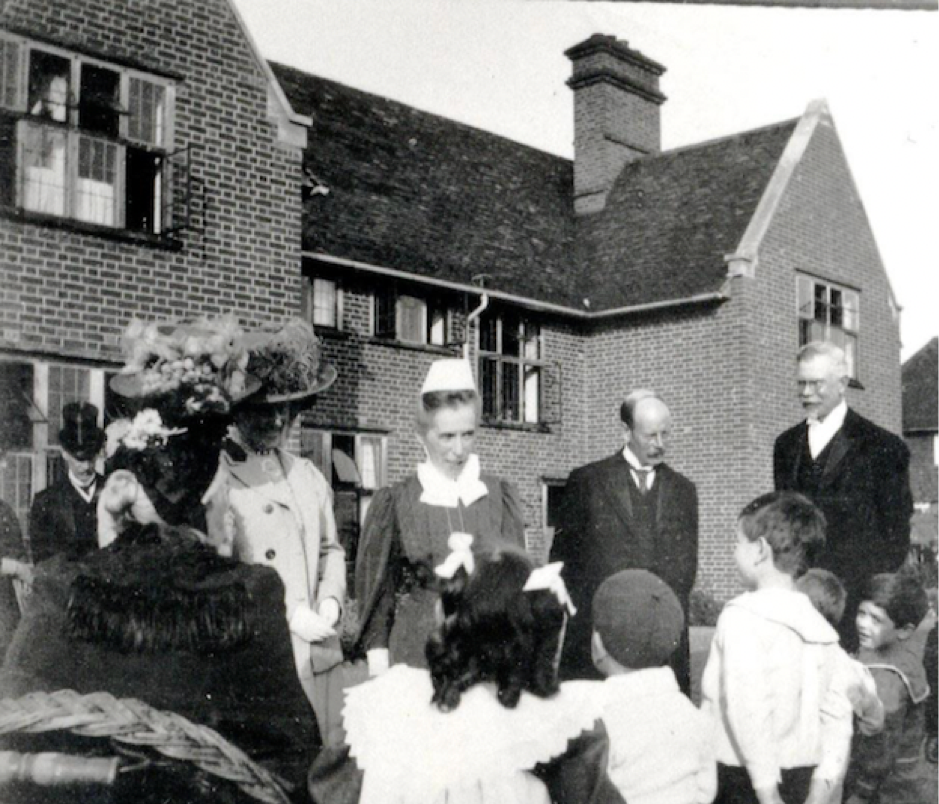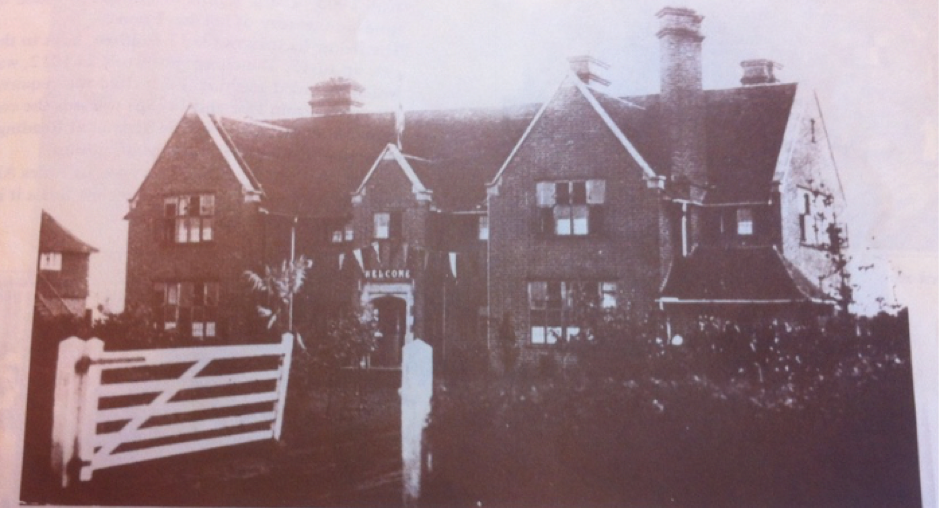OPENED ON ST LUKE’S DAY, October 18th 1898
An outline of the history of St Luke’s Home from its early days around 1886 in three cottages at Cobblers City before its move to a new building in 1904 at the other end of Headley Road East near Martin’s Corner; the modern day Woodley roundabout. Here it was established as a convalescent home for sick children who came mainly from London and it was funded entirely by donations and subscriptions.
Initially, one of the benevolent Dashwood sisters of Sonning was involved in setting up the home, Later the Dashwoods also funded the parish nurse in 1900. Towards the end of the 19th century, the building was owned by Miss Ellen Dashwood on a site in Cobblers City, which in 1843 was occupied by three cottages belonging to a Sarah Luke. The name of Sarah Luke was corrupted to a more appropriate St. Luke, being the only connection to the original cottages. St Luke’s Cottages in Headley Road was the first location of the St Luke’s Home for Sick Children.
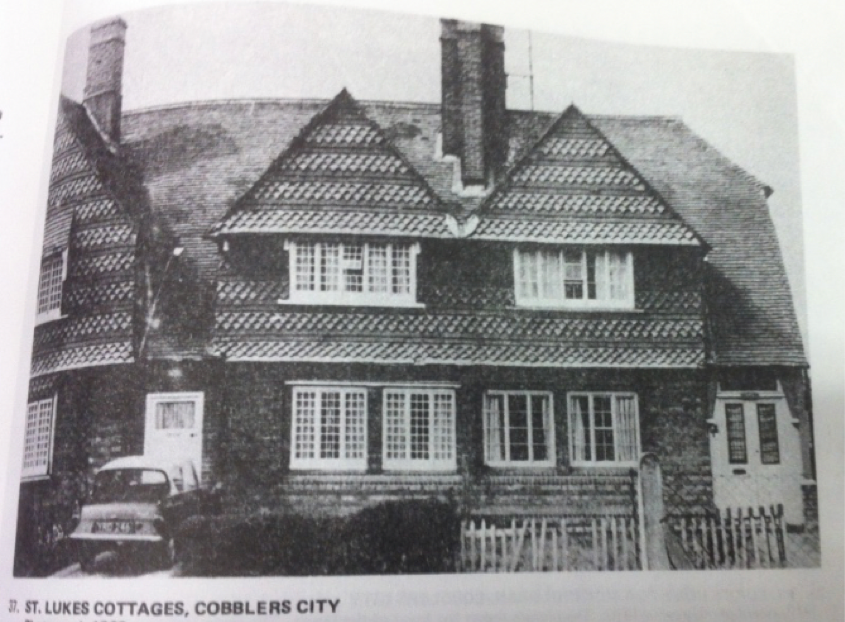 Having its origins at a house on Little Heath Common in Tilehurst, with a mere three beds, the offer of a larger and more suitable house at Woodley was kindly made by Miss Dashwood. It opened in April 1886 which Miss Dashwood announced by an advertisement in the Reading Observer newspaper ‘For Men and Lads’ to contact her regarding admission. Lads had to be over 12 years of age.
Having its origins at a house on Little Heath Common in Tilehurst, with a mere three beds, the offer of a larger and more suitable house at Woodley was kindly made by Miss Dashwood. It opened in April 1886 which Miss Dashwood announced by an advertisement in the Reading Observer newspaper ‘For Men and Lads’ to contact her regarding admission. Lads had to be over 12 years of age.
 Having its origins at a house on Little Heath Common in Tilehurst, with a mere three beds, the offer of a larger and more suitable house at Woodley was kindly made by Miss Dashwood. It opened in April 1886 which Miss Dashwood announced by an advertisement in the Reading Observer newspaper ‘For Men and Lads’ to contact her regarding admission. Lads had to be over 12 years of age.
Having its origins at a house on Little Heath Common in Tilehurst, with a mere three beds, the offer of a larger and more suitable house at Woodley was kindly made by Miss Dashwood. It opened in April 1886 which Miss Dashwood announced by an advertisement in the Reading Observer newspaper ‘For Men and Lads’ to contact her regarding admission. Lads had to be over 12 years of age.
The Home comfortably accommodating eight patients, for whom there was the added benefit of being able to use the Working Mens Club which was also established by Miss Dashwood in the same building three years earlier. This Club was modelled for the most part on the same rules as the Sonning Club. Most patients stayed three weeks, some for a month. An experienced matron had charge and beds cost 10s and 6d per week. (about £35 today) Patients came from the Royal Berkshire hospital but most came via the Charity Organisation Society of London
It was suggested that it was improved and extended and the Home for Sick children was opened on St Luke’s Day October 18th 1898. The new St Luke’s Home was a well known local contribution to the voluntary hospital movement at a time when London was the centre of such charity work. Tuberculosis was rife in cities at the time and many country towns and villages established homes for the poor to rest in the pure country air.
The Matron was Miss Ellen K Pantin with Miss Alice Coombes assistant Matron whose efforts are mentioned in the Home’s annual reports. Both are recorded on the Census for 1901 and 1911, where interestingly, a baby boy from South Africa called Leslie Gordon Andresen was also recorded and he lived there till 1915. It was usual for patients to only stay a few weeks but unusually, he grew up here and left aged 16 and he emigrated to Canada where he enlisted in the Canadian Black Watch. He must have had an important relationship with Miss Pantin, as he arranged for his wages to be paid to her while he was fighting in the Great War.
In 1904 it was decided to build a new bigger convalescent home nearby, also on Headley Road. The driving force was Mrs Helene Segnitz of 4 Whitehall Court, London, who provided the funds and became the President of the Home. It was to be dedicated to the memory of her son Frank Segnitz who had died age nine in 1903. The architect was John Duke Coleridge of 124 Regent Street, London, building began in 1904 and was opened on May 12th in 1906, Other members of the Committee of nine included the Hon. Mrs Crawford of The Vicarage, Sonning on Thames and Mrs Sutton of Home Park, Sonning.
There was a report of the opening ceremony in Sonning Parish Magazine JUNE 1906- ‘On the afternoon of Saturday May 12th, a large number of friends assembled together at the opening and dedication of the new St Luke’s Home for Sick Children at Woodley. Canon Holmes, gave a very interesting account of the work of the Home. “A Home”, he said, “which was true to its name – a Home to cure medical and physical pain and a fitting memorial to a little boy who was one of God’s sweetest flowers, which he picked before it had time to fade”.
A look into the background of St Luke’s president, Mrs Helene Segnitz née Rosing (pictured) shows she was a very wealthy woman indeed. In her Will, she left the equivalent of £24 million at today’s value. Her father was a commodity broker and merchant of Rosing brothers in the City, one of London’s largest coffee importers and owner of many coffee plantations. Mr Segnitz, born into a wine merchant family in Germany, came to work for Rosings and married Helene, the boss’s daughter. He was also involved in the shipping business.
When it became known in early 1906 the Home was shortly to be relocated, an attempt was made to restart the Working Mens Club in the rooms being vacated which had so generously been lent by Miss Dashwood.
Funding the running of the Home was by subscription. In 1907, Subs totalled £146 of which the Prince of Wales gave £5. The Segnitz family gave the largest subscription, total of £12 6s 6d.
Various sales of work made £50. Donations £129, 2/3 of which was raised by a Francis A Browne esquire of 36 Mincing Lane, London. He made contact with many companies in the City such as Messrs. Baring, Kleinwort, Rothschild, Faber, Lazard Bros. who made annual donations. Initiatives included the formation of a ‘Guild of St Luke’s’ with the minimum subscription of 2 shillings per year. Many gifts were given to the Home including fruit, books, clothes and toys, Christmas food and decorations, garden plants and a perambulator.
The committee always pleaded earnestly for more and for increased subscriptions. The funding was a perpetual concern. The weekly cost for a sick child was 5s 6d which included washing for ordinary cases. A special mention was made when The League of Mercy made a welcome of grant of £10. Special cases cost 7s 6d. Boys were received from 2 to 10 years of age and girls from 2 to 15. Children came predominantly from London with only 20 from the local area, arriving at either Earley or Twyford stations. Each child had to bring return fare and 1shilling towards cost of conveyance to and from the station; also a brush and comb and change of clothes where possible.
In 1907 there were 93 children admitted of which 68 were nursing cases and 25 ordinary convalescent cases. It was deemed not to judge the Home on the numbers of children admitted. For example, a child with a spinal injury of which there were 12 this year, may occupy a bed for 12 months but another bed may have been filled many time over by ordinary convalescent cases. The Home closed for 2 weeks at the start of the year owing to a case of diphtheria brought by a child from London who was nursed in the isolation room and fortunately, the disease did not spread.
main reasons for admission to St Luke’s were hip disease, rickets, Chorea, now known as Huntington’s disease and forms of tuberculosis including Incipient Phthisis.
The audited Balance sheet showed the 1907 expenditure of £500 with £60 balance in hand. The largest expense was housekeeping £236, followed by wages £76 which included the gardener; Matron was paid £40 for the year.
A distinguished visitor came to St Luke’s on 14th October 1908, Princess Victoria, grand daughter of Queen Victoria. Her own mother, Princess Christian (Helena, the third daughter of Queen Victoria) of Schleswig-Holstein was an active supporter of the role of district nurses.
Princess Victoria made her special visit to Cobblers City to St Luke’s, on her way to Holme Park, Sonning to address the local organisers of the League of Mercy which supported voluntary hospitals in London. She was the Lady President of the League of Mercy for Berks, Bucks, Hants and Oxon. According to the Reading Chronicle of 17th October, in preparation for her visit, the home had been decorated with flags and bunting with a ‘Welcome’ banner over the entrance. She was presented with a bouquet by Grace Smith, a little girl on crutches. The Princess made a tour and exchanged kindly words with the children on the lawn at the back. Some little ‘inmates’ lay in perambulator beds taking advantage of the warm weather.
It was now ten years since the Home opened and almost 1000 children had been admitted over that time. The Woodley air was deemed most beneficial. Constant efforts were made to provide the best facilities to promote health; for example in 1911, two cows were installed in their own cowshed for fresh milk. Changes came in 1915, when the Matron, Miss Pantin and her assistant Miss Coombes left to be replaced by Miss Marion Amy Hall who had previous experience at Great Ormond Street Children’s hospital in London. Then the following year saw the deaths of Ellen Dashwood, who started the homes for convalescence in Woodley and also the president Mrs Segnitz, who built the latest Home. Even so, while the First World War did affect the level of donations, the new Committee continued to raise funds to ensure the Home carried on its work until just before the next war when the Reading Aerodrome was gaining importance.
The Hundred Acre field in which the building stood was bought by Mr Charles Powis in 1929. Over the next five years, the airfield grew, becoming much busier as the Miles Aircraft Company arrived in 1932. Gradually, the growth of industry so close to St Luke’s was to impact on its future.
The annual report of 1932, tells of the great success of Mrs Anson, the Home’s secretary for 30 years who made a special effort for fundraising by way of a competition to win a gold watch. She collected the sum of £165 in twopences which equated to over £7600 at today’s value.
In the Spring of 1935, Mrs Eustace, the Home’s President made contact with the secretary of the Little Folks Home, Bexhill, the seaside branch of the Queen’s Hospital in Hackney, London, because of mounting concerns about the number of aircraft factory buildings so close to the Home. The Committee had decided that after 38 years of useful work that the building developments adjacent to the Home had made its position unsuitable and regretted, due to these unavoidable circumstances for the need to close the Home. It had been decided to dispose of assets to endow another institution doing
similar work; namely the Little Folks Home where children are treated from all over London and the Home Counties. A reply came from Mr Bessell of the Little Folks Home agreeing that built up areas are hardly suitable for children’s homes. Letters passed between the two Homes detailing the sale of the building and land to one of the aircraft companies. When all assets were realised, a final sum of £6641 was transferred to the Little Folks Home and it was agreed a plaque would be erected in the main hall to commemorate ten beds endowed by St Luke’s. A playroom was also to be built.
Mrs Eustace wrote to all the subscribers to explain that the Home was closing but to encourage them to continue their donations and in future to send monies to the Little Folks Home instead. Likewise the secretary at Little Folks Home wrote similar letters, but many of the City of London subscribers, declined to continue their assistance stating that they felt the connection with the Segnitz family had been broken. Though Queen Mary continued to send £10 per annum.
Meanwhile in 1936 on the western extremity of the aerodrome in Woodley, St Luke’s Home was taken over to provide accommodation for those being trained for the Air Force at the Flying School. Under the name “Hawkhurst”, it became a mess and sleeping quarters for the trainee airmen. The conversion work was done to the design of Messrs Guy Morgan of 9, Gower Street, London WC1 and was completed in five weeks by working night and day. There was tennis court on the back lawn and kitchen gardens to supply vegetables. The airfield was used throughout WW2 and closed in 1953.
FINAL DAYS
Hawkhurst was later bought by Adwest Properties Ltd who let it to Lebus, the furniture makers. A number of businesses used the premises including ‘Mr Harry’ shirts until it was finally knocked down in early 2019 as part of a redevelopment scheme.
Note During World War 1, St Luke’s Parish Hall, Erleigh Road, Reading was converted to a Red Cross hospital by 34th VAD to nurse wounded soldiers. There is no connection to St Luke’s Home, Woodley.
Sources
Woodley in the 19th Century by Frances Lloyd
The Woodley Album by E Simmonds
Flight Magazine 1936
Annual Reports of St Luke’s 1907 and 1912
Sonning Parish Magazine January 1883, June 1906
Contemporary newspapers of Reading – Mercury, Chronicle and Observer
Woodley Library boxes of documents and photos
Royal London Hospital Archives
Berkshire Museum of Aviation
Census 1891 1901 1911 and 1939 Register
Map Woodley 1910 reproduced with the permission of the National Library Scotland
